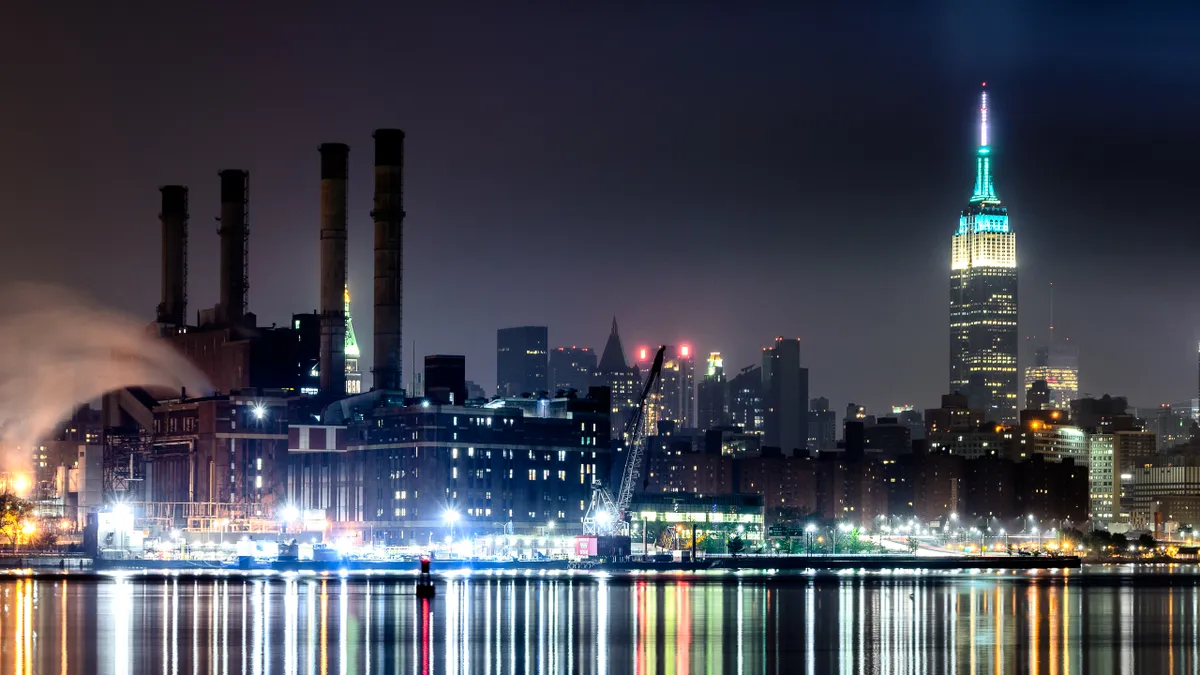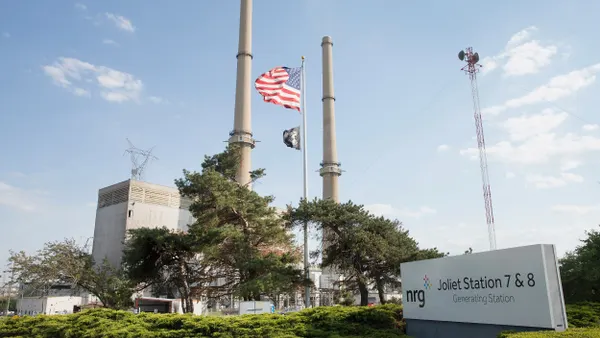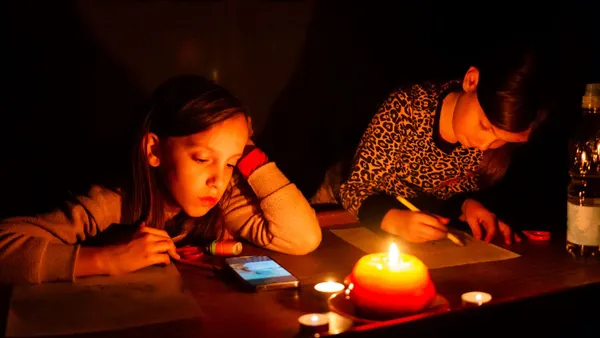Dive Brief:
- With COVID-19 cases slowing, New York has undertaken a phased approach to reopening the state's economy, but so far this has not resulted in higher electricity demand, according to the state's grid operator. The Independent System Operator (ISO) on Wednesday said it has examined several economic scenarios associated with the global pandemic and now expects annual energy consumption for 2020 will be 6% to 7% lower than previously forecast.
- For the first week of June, the grid operator said energy on its system averaged about 8% to 9% below expected demand levels — the same as it did in the final week of May. That's largely because New York City, which accounts for most of the state's energy use, has only begun to reopen. "The upstate return to work has just barely touched on statewide demand," NYISO President and CEO Rich Dewey said in a call with reporters.
- While the ISO expects lower demand this year, more of it is being supplied by carbon-free electricity, though it varies significantly by region. The upstate area consumes 88% zero-emissions electricity while the downstate New York City region gets about 29%, according to the ISO's new Power Trends 2020 report.
Dive Insight:
The economic impacts of COVID-19 have resulted in lower electricity demand and the ISO believes the "unexpected change in conditions will have broader implications across the industry."
According to the ISO's annual report on technology, economic forces, and public policies, many state programs for distributed energy resource deployment and electrification "are likely to become lower priorities and less economical as lower prices for fossil fuels make savings from such investments smaller or less plausible in the near-term." At the same time, reduced disposable income among consumers "may make them more risk averse."
At the national level, the U.S. Energy Information Administration has estimated the spread of the coronavirus will cause a delay or cancellation of roughly 4.9 GW of previously planned capacity expansions through September 2020.
Despite the potential slowdown in adding clean energy resources, New York is working toward new green goals set in the Climate Leadership and Community Protection Act, which lawmakers passed last year. The state wants to supply 70% renewable electricity by 2030, and 100% carbon-free by 2040.
Reaching those targets will be a much greater challenge for downstate demand centers, however. And the ISO is looking to energy storage and transmission projects from upstate wind and hydro resources to help bridge the gap. Ultimately, the ISO's carbon pricing proposal remains "the most effective way to do that as quickly as possible," Dewey said.
The ISO floated a carbon pricing plan in 2018 to internalize the social cost of carbon emissions in the grid operator's wholesale energy market. However, the plan will require authorization from state officials and the Federal Energy Regulatory Commission to implement. In the meantime, the ISO continues to roll out policies and clean energy projects to decarbonize the grid.
"We look at this as a grid in transition," Dewey said. "We're looking not only at how we maintain reliability of the system as the grid radically changes, but how we provide the right investment signals."
The ISO is performing several studies to inform future market, planning and operational enhancements, including a Congestion Assessment and Resource Integration Study and a Reliability Needs Assessment. There is also a multi-phase Climate Change Impact & Resilience Study that will inform future market, planning and operational enhancements the grid operator says "might be necessary to meet system needs and conditions as demands on, and conditions faced by, the grid change over time."















